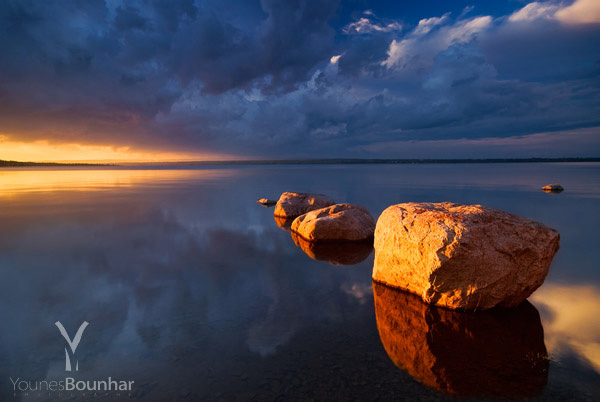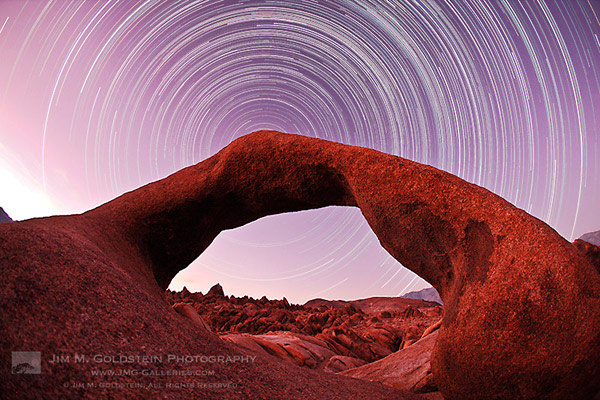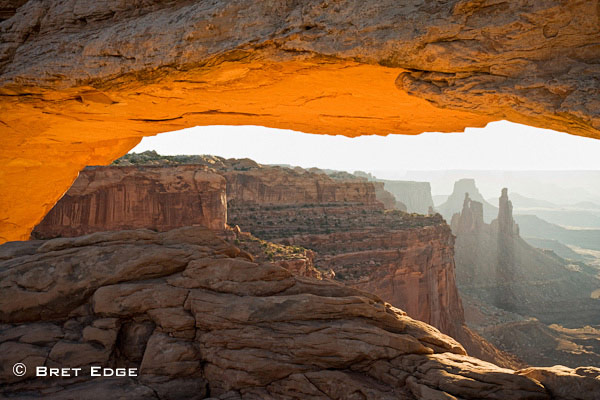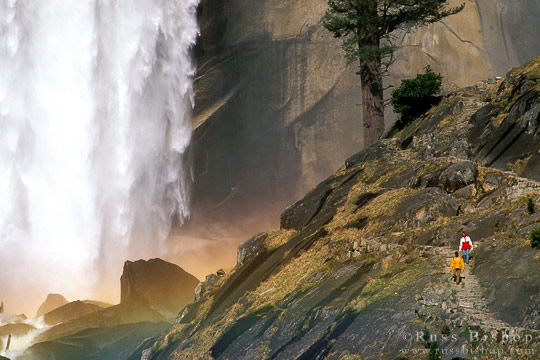When looking at powerful imagery, we often wonder about the creative ideas that went through the minds of the photographers who created those images. Of course, each artist has his or her own style of approach, so I’ve asked a handful of accomplished and talented landscape photographers whose work I admire to share their own insight on photographic inspiration and method.
In their own words, here are their answers to the following question that I posed to each of them. Please be sure and thank each photographer for contributing to this article by visiting their websites and blogs, checking out their eBooks and by sharing this post.
What inspires your creativity when you’re looking for subject matter to photograph, and when you do find a subject, how do you typically approach shooting it? i.e, first thoughts, visual exercises, methods or techniques.
Younes Bounhar

“In terms of inspiration I am really not very choosy. It literally can come from anywhere. I obviously look at a huge amount of photographs on a daily basis, but inspiration comes for me from everyday life, from the news, from my travels, my own madness, etc…
Composition is really central to my approach to shooting. While concept, light and technique are obviously important, composition is what really brings it all together. I always strive to make as aesthetically pleasing photographs as possible, and composition is what it is all about.
The approach is fairly simple, I rely very heavily on visual elements of design. I am always on the lookout for lines, shapes, balance, negative space and base my compositions around those elements. Recently, I have been trying to simplify my images even more and really distill the essence of my subject to the extent possible.”
-Younes is a travel and landscape photographer based in Ottawa. See info about his upcoming Morocco Photo Adventure Workshop Tour and read his blog here.
Jim Goldstein
“As an outdoor photographer in general I am inspired by the beauty of nature. As an eternal student of the craft I am always inspired to look for new ways to photograph my subjects. Internally I aim to transform my inner “wow” moment by artistically interpreting the scene and referencing against a mental rolodex of techniques, styles, etc. that will present my subject in a new and unique way.
I usually identify my subjects based on the emotion they evoke in me and rarely do I shoot my subjects straight away unless rapid lighting changes require me to do so. Studying my subject and evaluating the scene, even if briefly to an outsider, allows me to determine a composition, perspective, technical settings, lens choices and techniques that I’ll employ to capture the scene or subject as I envision.
Where ever possible I try to scout and make notes of places and subjects that are of core interest to me and return to photograph them more than once. While inspiration can happen in a second it can also happen over time.”
-Jim is a full time professional photographer who specializes in outdoor and nature photography. Check out his brand new ebook, Photographing The 4the Dimension: Time, and visit his blog for more photographic insight.
Ian Plant
“In my opinion, nature photographers too often seek out beautiful scenery and epic light. There’s nothing wrong with this approach, but it often leads to a lot of photographs that look very much alike.
I’m inspired instead mostly by moment, and those rare and fleeting convergences of typically disparate elements that for a brief time come together in a powerful way. Those elements can be a pleasing juxtaposition of compositional forms, the effect of weather on a scene, or even something as subtle as the brief convergence of a cloud with a landscape feature. Weather, mood, the passage of time during a long exposure – these and other “intangibles” are where I find my greatest inspiration.
I like nothing more than to capture a fleeting moment that transforms even a mundane place into something sublime. When seeking to capture moments, patience, flexibility, and decisive action become indispensible virtues.”
-Ian is a full time professional nature photographer, workshop instructor, and the author of 8 outstanding photography eBooks.
“For me, each situation is unique and i don’t have a “typical” approach to setting up a shot. Since I shoot a lot of urban images I often know that I have to be up at sunrise to get my shots with the least amount of people possible in the image. I often have to shoot quickly and move on, especially if I want to get a lot of photos taken during the best time of day. It can be a bit of a run and gun way of working at times.
My first thoughts in urban areas (if I don’t have specific permission) are: Please let there be no dim witted Napoleon complexed security guards. In a more natural settings, I pray for the least amount of man eating bears possible 🙂
What inspires me is symmetry, interesting abstract compositions, amazing light at sunset and sunrise, perfect cloud cover, glimmering city lights on a rainy night and any other form of beauty that presents itself to me. I can’t wait for the next inspiration, whatever that will be.”
-Ken is a full time travel photographer who shoots urban landscapes. He specializes in creating iconic HDR imagery of the places he visits. Follow his adventures on his blog.
Bret Edge
“I find just being outside inspires me to create images. Being locked away in an office all day zaps my creativity. Heading out for a good hike, especially in an area that’s new to me, fills me with creative energy and gets me excited to make photographs.
I approach most new subjects the same way – with camera in hand and tripod packed away. I believe the best way to explore a scene is to do so with the camera in your hands, not on a tripod, which allows you to easily move around and try different perspectives. Get high, get low, use a foreground or don’t, move side to side, walk back and forth.
Once the camera gets secured to a tripod it seems like we’re somewhat stuck. Exploring the scene from as many angles as possible allows me to discover more creative compositions.”
-Bret is a nature and adventure photographer based in Moab, Utah. Check out his ebook, The Essential Guide to Photographing Arches National Park, and read his blog here.
Guy Tal
“I realized that I am most creative when I’m emotionally connected to the places and subjects I work with. This, to a large degree, is why I chose to live in a remote and scenic little town in a place that I love and where I am consistently inspired. I like to develop a relationship with the things I photograph so I can sense their moods and know how and when to approach them.
When I’m out, I give myself enough time to explore and listen to their stories. It’s these stories, big or small, that create the concept in my mind before I even know what the visual image will look like. A concept is the trigger that leads me to think about composition and visualization. I will spend time identifying the visual elements available for me and determine how to best arrange them within the frame.
Visualization, especially, is important. I need to see in my mind the finished image, knowing how it may appear once captured and processed. Sometimes, the result of visualizing is actually a decision to return at another time because some element is missing or the light is not ideal.
Once visualized, I’m already most of the way there. The rest is a technical exercise. The camera doesn’t come out of the bag until the time is right and I know exactly how I want to compose and present the image. It’s a methodical and deliberate process, favoring quality and personal expression over quantity. I review it in detail in my “Creative Series” eBooks.
This image above was five years in the making. I first saw these blooming badlands in 2005 and despite the flowers, conditions were just not right and I did not have time to “work” it. I kept returning year after year but this rare phenomenon did not occur again until the spring of 2010. When it finally did, I knew exactly what I wanted and was finally able to capture it.”
-Guy is a full time photographer, writer and naturalist based in Utah. Check out his Creative Series eBooks and read his musings about nature and photography on his blog.
Russ Bishop
“My approach to action/adventure shooting of course differs from my landscapes and nature. For the active shots, I love to shoot wide] and up close, and the 16mm is the perfect go-to lens with its great depth of field and ease of handling. These shots are spontaneous and I want that feeling to come across in the image. I’m part of the action and just documenting the flow of events – whether it’s a skier skating by or a climber negotiating a ridge.
For the landscapes, I’m meticulous about researching an area beforehand, using topo maps and programs like Photographer’s Ephemeris to determine ideal positions. But then I like to store that information in the back of my mind and arrive at a location with a child’s eye – spontaneous and open to all the possibilities. As with the actions shots, I love shooting wide with plenty of depth of field to create a sense of place for the viewer and the 17-35mm gives me just the flexibility I need.
Regardless of my subject, I love bold bright colors and try to always include angles in my images to impart a sense of drama and draw my audience into the frame.”
-Russ is a California based fine art and stock photographer who specializes in nature, outdoor adventures and travel. Visit his blog for the latest imagery, tech tips and travel anecdotes.
Anne McKinnell
“Sometimes I get stuck and I don’t know what to photograph or what technique to use to create something meaningful. When that happens I usually head for the water – it is usually the ocean, but it can be a lake or a river too, that is what really inspires me. I know I will find something, but I don’t know what it is going to be when I head out the door and that is what is exciting.
It all depends on what happens when I get there. Maybe it will be a lake and it will be glassy calm so I will try to create an image with reflections that portrays peace. Or it might be the ocean on a windy day and the waves are crashing against the rocks so I will try to portray the power of nature. Or maybe it’s just a breezy day, I don’t get the reflections or the crashing and I have to put some thought into what kind of feeling the scene gives me. Either way, it forces me to truly experience nature, find what is emotional about the place and the time, and try to put that emotion into my image.”
-Anne recently traded in her old life to become a nomad photographer/writer. Follow her adventures here and download her free eBook, 8 Types of Natural Light That Will Add Drama To Your Photographs.










Thanks Dan! I’m honored to be included in this wonderful group of artists.
Dan, I just found your blog from a post on G+ by Ken Kaminesky. This is a great article that really helps understand what great photographers think/feel when practicing their craft. Thanks for sharing.
Thanks for stopping by and for leaving a comment, Andrew! Stick around, there’s lots here to see!
fabulous landscape photography
[…] You can’t be a great landscape photographer without a good tripod. Period. Ask any top outdoor photographer. Ask all the great shooters who shared their creative insight in this post. […]
[…] 2. Landscape Photographers on Creativity and Inspiration […]
Hi Dan, what an interesting article, echoing Andrews comments really, but it’s so refreshing to read an article that examines the ends landscape photographers go to in order to capture that elusive shot. Great read and thanks for sharing!
Thanks, Barney
[…] more landscape photography goodness and creative insight? Check out Landscape Photographers on Creativity and Inspiration. Share Don't leave yet! Stick around and check out some of these related posts – Photography Books […]